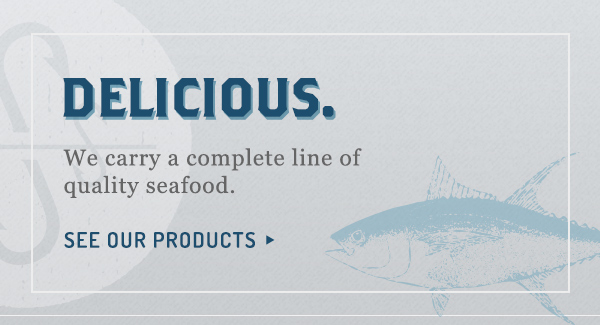
Simply put, frozen is fresh.
When seafood is properly frozen in its freshest state, good things happen. Freshness, moisture and flavor are locked in. We call this, “freshly frozen.” When you buy “fresh” seafood from the case at your local grocery store, often there is no way of knowing when that product was harvested. Maybe it’s not that “fresh” after all?
It’s also a great way to reduce waste. Individually frozen seafood allows you to pull from your freezer only the amount you need for your meal. Avoid wasting unused and highly perishable fresh seafood.
And who knew you could help the environment while saving money at the same time? Often times, fresh seafood is shipped by air freight to your local markets. As you can imagine, that’s expensive. Frozen seafood is shipped in refrigerated containers by boat, train or truck. All of which help you save money and reduces the impact on the environment.
We think it’s an easy choice but don’t just take our word for it. Here is some additional light reading if you’re interested…
Benefits
Convenience:
Frozen seafood is most convenient because you use it when you need it. Just take it from the freezer, and it’s as flavorful as the day you bought it. Also, since it is less perishable, frozen seafood can be used over a longer period of time without any significant loss in quality.
Economy:
Frozen seafood generally offers a more stable and affordable price, as it buffers the wild fluctuations in supply that affect fresh seafood. Most frozen fish fillets provide good yields. Waste, such as bones, are already discarded. Frozen seafood can also be less expensive because shipping is done more economically and efficiently.
Variety:
You have the option to select any species of seafood in the portion size for any manner of preparation you prefer: breaded, grilled, sautéed, baked, broiled, blackened… and more!
Availability:
Some seasons for fish last only a few weeks or even days. Catching and freezing these short-season species enables consumers to enjoy these delicious seafoods with outstanding quality and delicate flavor all year long.
Taste:
Sophisticated equipment quickly freezes seafood products within hours of capture to bring consumers a “fresh caught” flavor. Yes, it’s true — frozen seafood can actually be fresher than fresh.
Quality:
Seafood is frozen at the peak of freshness to lock in nutrients and preserve texture.
Nutrition:
More consumers are searching for heart-healthy seafood: low in sodium, low in fat, low in calories, and an excellent source of protein. Frozen fillets allow for a wider selection year-round, likely curb demand and put a cap on further price increase.

